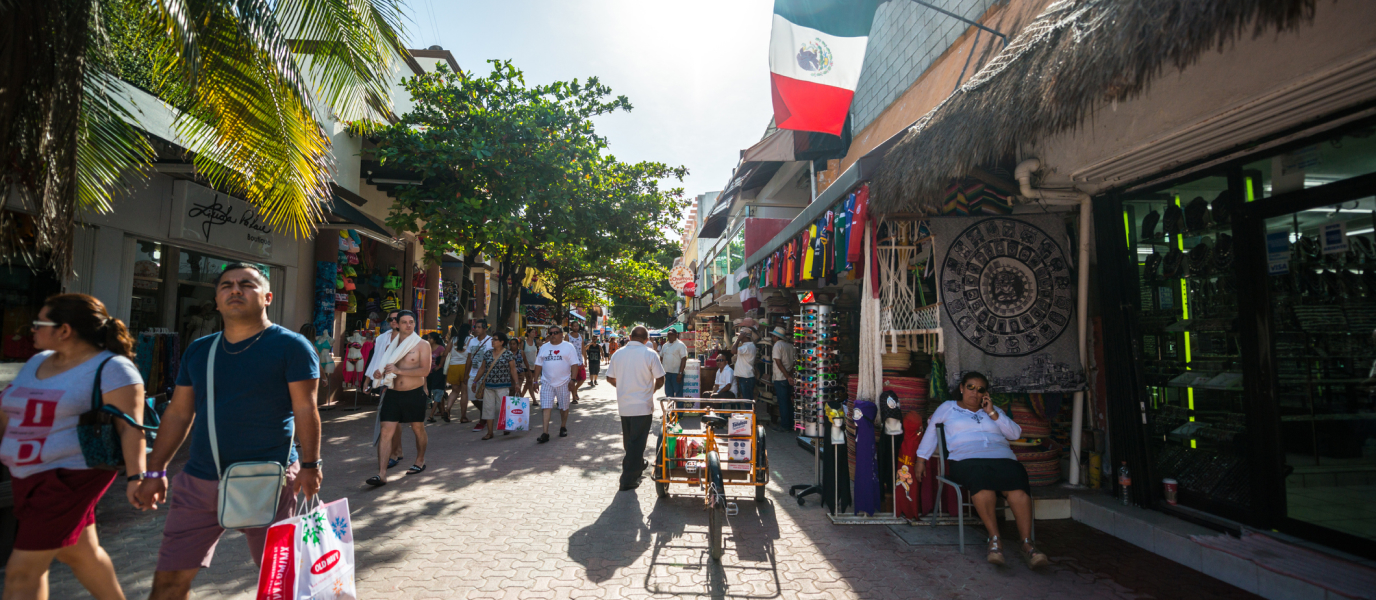Who doesn’t like to take home a nice souvenir from their vacation? Are you looking for a gift for that special someone? Just loved what you saw in that boutique or craft stall? Then, don’t forget to get that little detail that will make you remember your vacay in Cancun and the Riviera Maya. Or just buy some of the typical products you can find in this breathtaking destination, from delicate crafts to gourmet delicacies, and take home a little piece of Mexico.
Cancun and the Riviera Maya are super complete tourist destinations. And besides the sun, beach, adventure, archeology and so forth, they offer you all kinds of options to enjoy the best shopping time. For example, visit the great shopping centers of Cancun, such as La Isla and Plaza Kukulkán, and find from the most important international brands to stores with the best local products. Or visit traditional shops like Mercado 28 and discover the beautiful handicrafts from different parts of the country, including clay and ceramic objects, basketry, textiles, goldsmith pieces, and much more.
You can also walk along the famous Fifth Avenue of Playa del Carmen and take a look at its boutiques and small stores. Jewelry, fashion and accessories, handicrafts, beach items, and a thousand other things are available there. Another option is the handicraft stalls found in different archaeological sites, such as Tulum, Coba, and Chichen Itza. They offer beautiful reproductions of pre-Columbian objects as well as all kinds of souvenirs. Or the different boutiques and shops of all sorts in places like Puerto Aventuras, Akumal, and Tulum.
In any case, on your next vacation in Cancun and the Riviera Maya, don’t forget to take a good look at all the beautiful things you can find. For a start, check out the most typical products of the region, and of all Mexico, such as:
Tequila. Mexico’s “official” drink
You are in Mexico… so buy the best tequila! After all, it’s the national drink par excellence and one of the country’s most authentic symbols. Recognized throughout the world, this premium distillate is not produced in the Yucatan Peninsula. Still, in Cancun and the Riviera Maya, it’s pretty easy to find stores with the best quality products.
Obtained exclusively from the blue agave, tequila is presented in different types according to its production process:
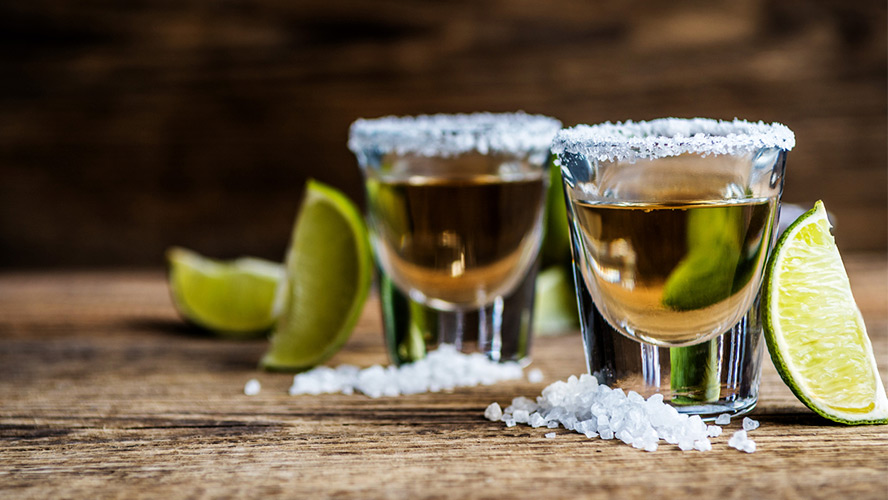
- White Tequila (also known as “Silver”). It’s the distilled product, just as it comes out of the stills, and with less than two months of maturation, with its characteristic transparency. The most authentic tequila and the base of all the other types.
- Young or “Gold” Tequila. It is obtained by mixing white tequila with rested and/or aged and/or extra-aged tequilas. Depending on the proportions, it acquires more or less intensity.
- Tequila Reposado (“Rested”). The product is subject to a maturation process of at least two months in oak or holm oak wood barrels. Hence, the white tequila slowly transforms and naturally acquires additional sensory characteristics from the wood.
- Tequila Añejo (“Aged”). In short: a Reposado with a maturation process of at least one year in oak or holm oak wood barrels, which, moreover, can only have a maximum capacity of 600 liters.
- Tequila Extra Añejo (“Extra Aged”). In this case, the maturation process must be at least three years in direct contact with the wood. Especially in the Aged and Extra-Aged (although there are also some white and rested ones), the “Reserva” distinctive usually identifies the highest quality products.
A tip: If you want the best product, make sure it’s made out of 100% blue agave. Because other “official” tequilas are produced by mixing different types of sugars during fermentation.
Cocoa. The jewel of the Maya World
The first written record of the word cacao or cocoa [“ka-ka-w (a)”] comes from the Classic period (c. 250-900 AD) of the Maya culture, the ancient inhabitants of the Yucatan Peninsula. In any case, the fruit of this native tree of tropical and subtropical regions of the American continent has become one of the most popular crops in the world. It doesn’t matter if it’s as a good ol’ candy bar or as a sophisticated beauty treatment; everybody just loves chocolate!
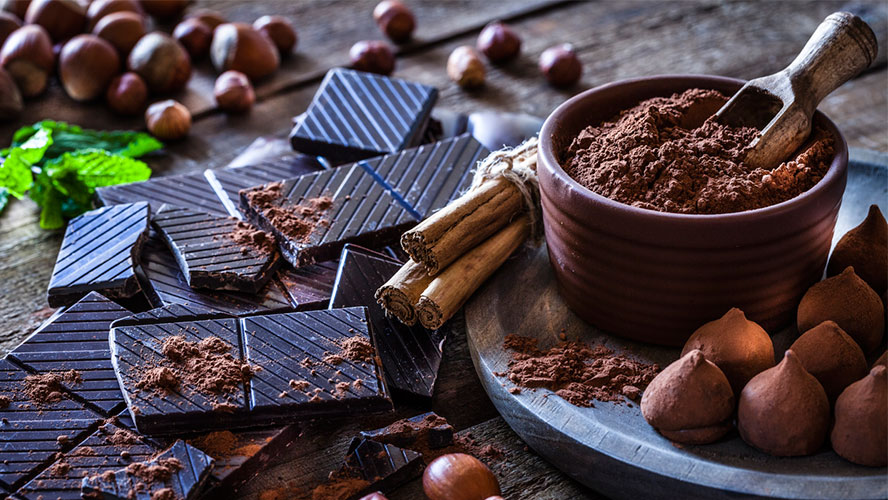
So, on your next visit to Cancun and the Riviera Maya, don’t forget to buy the best artisan Mexican chocolate or one of the many products made from locally sourced cocoa (sweets, liqueurs, lipsticks, soaps, shampoos…). Its beneficial properties (antioxidant, moisturizer…) and its delicious taste –especially in the best artisan products– are more than enough reasons to enjoy this authentic jewel of the Maya World.
Coffee. From the highlands
Although this crop is not native to the American continent, Mexico is one of the 10 largest coffee producers worldwide. Beyond quantity, Mexican coffee has established itself as a high-quality product, especially the variety known as high altitude coffee, grown mainly in the states of Veracruz and Chiapas (in both cases, the coffee has a designation of origin).
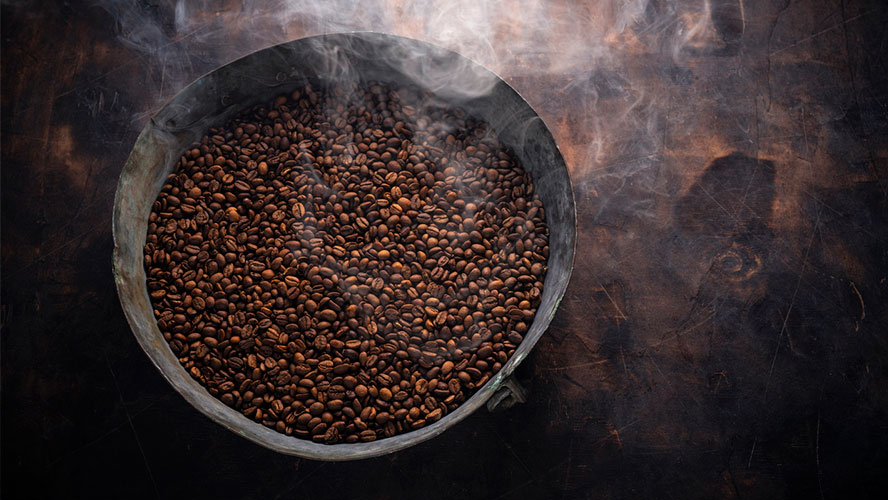
In recent years, Mexican coffee has become a product of extraordinary quality. And it’s used not only to prepare the popular hot beverage but also all kinds of products, from liqueurs to sweets. So don’t forget to buy some (whole grains or ground coffee) on your next visit to Cancun and the Riviera Maya. Then, once back home, remember your incredible vacation in the Mexican Caribbean while sipping a cup of one of the best coffees in the world.
Crafts and decoration. Objects with a soul
The delicate and skilled artisan hands of Mexico manage to do something that at first seems impossible: create objects with a soul. Thanks to the creativity and originality of pre-Columbian cultures and their crossing with techniques, materials, and tools from Europe and the rest of the world, traditional crafts and new decorative proposals inspired by artisan work offer you all kinds of unforgettable memories and the perfect objects for design lovers.
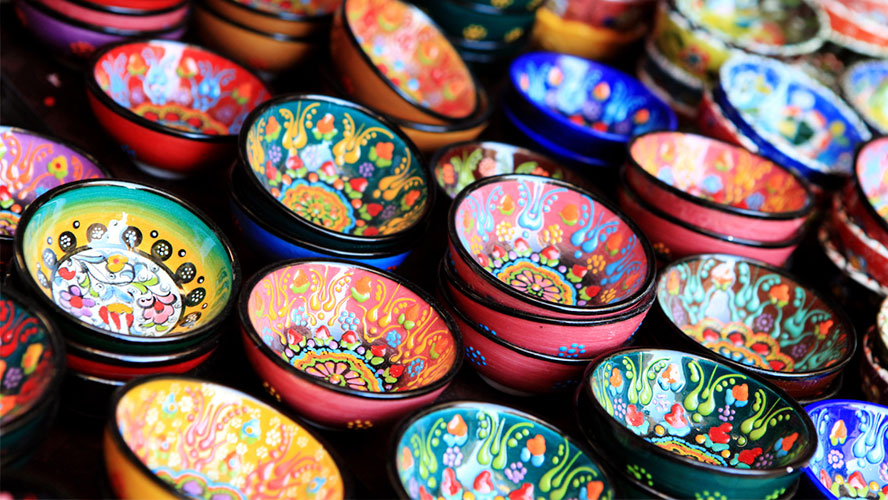
It doesn’t matter if you buy them in markets, shops in tourist areas, or in the stalls that can be found in archaeological zones. But don’t leave the Riviera Maya without a papier-mâché alebrije, a black clay skull, or a piece of Talavera ceramic. Or you can get a classic sombrero. Or what about a pair of earrings, a ring, or a necklace made of silver and semi-precious stones (opal, jade, obsidian, etc.)? Maybe a beautiful wooden toy, or a reproduction of a pre-Columbian piece, a string hammock, a rag doll, an embroidered purse… You will be surprised by the quantity and quality of objects that Mexican creativity is capable of producing. Take a good look at some of the “classics”:
- Silver. Mexico has always been one of the biggest silver producers in the world. And precisely for this reason, the delicate hands of Mexican artisans perform all kinds of wonders with this elegant metal, from decorative elements to jewelry.
- Maya-style jewelry. Since ancient Maya times, goldsmithing and gemstone works have resulted in authentic jewels. Discover genuine filigree masterpieces in gold and silver, as well as the delicate use of seashells and precious woods, among other materials.
- Hammocks. Although hammocks are not originally from the Yucatan Peninsula, these “hanging nets,” ideal for sleeping in warm climates, have become a star product in the area. Making hammocks (in different types and from several fabrics) is an art form passed down from generation to generation.
- Weaved baskets. Basket weaving is another of the high-quality handicrafts that you can find all over Mexico (Cancun and the Riviera Maya included, of course). From humble baskets used by peasants in their daily work to unique works of art made by the most skilled craftsmen, you can find all that and more. Also, don’t forget to look at the beautiful basketworks, fine hats, rattles, airplanes, and a myriad of decorative objects.
And if you are not a big fan of the “classics,” let the new artisan proposals surprise you: lamps, candles, ceramic pieces, glass objects, jewelry, carved wood, leather works… New interpretations of a long tradition that, without a doubt, are capable of surprising anyone. In any case, take home an object with a soul. Moreover, with your purchase, you help local artisans to continue working in their workshops and keeping these gems of Mexican folk art alive.
Traditional clothes. Cultural wealth
Cotton, wool, silk… Handicraft fabrics of indigenous tradition are a vital part of Mexico’s cultural wealth. Throughout the country, including the Riviera Maya, you can find all kinds of works made on traditional looms by skilled and delicate hands. And as with handicrafts, within the textile world, you also have from the most classic to the most recent and innovative proposals. New ideas, which, however, maintain their long roots sink deep in ancestral traditions. Here are a few examples of what you can’t miss:
- Rebozo. Also known as a shawl or scarf, this garment, made of wool, silk or cotton, which can be worn as a scarf or over the shoulders, to keep warm, to carry children…, accompanies Mexican women in their day to day since centuries.
- Sarape (or Serape). Also called a “jorongo,” this colorful cape-like rectangular woven blanket comes with or without a poncho-type head opening. It’s available in all kinds of colors and design patterns, and it’s traditionally made of wool or cotton. They are the perfect garment for a chilly day and even a nice decorative element.
- Guayabera. The elegant shirt typical of the Yucatan Peninsula and other parts of the Caribbean. They are traditionally made of cotton, linen, or silk and adorned with several pockets, vertical tucks, and embroidery.
- Huipil o hipil. Blouses and traditional dresses of pre-Columbian and mestizo origin, usually made of cotton and decorated with floral, geometric, and animal motifs embroidery.
- Huaraches. Traditional sandals made with braided leather straps, with different patterns, from the simplest to very elaborate designs, made by expert saddlers.
Are you interested in the combination of traditional textiles and current design trends? In Cancun and the Riviera Maya, you can find all sorts of boutiques and shopping centers with super creative and authentic proposals that you’ll love right away.
A tip: Ask at your favorite Barcelo hotel for the different shopping experiences that Vacaciones Barcelo offers you in the Riviera Maya and Cancun. The most comfortable and practical way to enjoy a great day of shopping!





































































